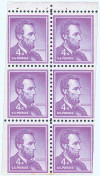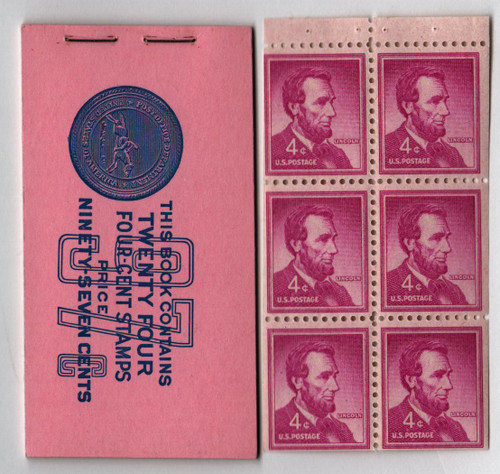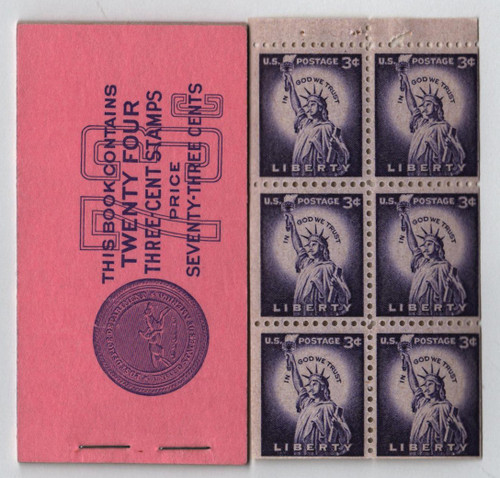U.S. #1036b- Tagged, Booklet Pane of 6
4¢ Abraham Lincoln
Liberty Series
Issue Date: November 19, 1954
City: New York, NY
Printed by: Bureau of Engraving and Printing
Printing Method: Rotary Press
Perforations: 11 x 10½
Color: Red violet
The image of Abraham Lincoln on U.S. #1036 is based on a portrait by Douglas Volk.
Lincoln Becomes America’s 16th President
Abraham Lincoln won the Presidential election of 1860. By the time he took office on March 4, 1861, seven states had seceded from the Union and formed the Confederate States of America. Four more states would soon follow. President Lincoln chose not to force the states to rejoin the Union – until Confederate artillery fired on Fort Sumter, in Charleston Harbor. This single act touched off a conflict that would last four long years.
By the following summer, President Lincoln felt it was necessary to change the policy toward slavery once and for all. In 1863 he drafted the Emancipation Proclamation, freeing all slaves within the states in rebellion. However, because the law applied only to rebel states, it could not be enforced by federal troops. So in actuality, it freed no slaves at the time. The Emancipation Proclamation did serve to shift public opinion in favor of the war effort by making it more of a moral struggle than a political one. It also paved the way for the 13th Amendment, which ended slavery in the United States.
The Liberty Series
Issued to replace the 1938 Presidential series, this patriotic set of stamps honors guardians of freedom throughout U.S. history. Eighteenth century America is represented by Revolutionary War heroes and statesmen such as Washington, Jefferson, Franklin, Hamilton, Henry, Jay, and Revere.
Leaders of the 19th century including Monroe, Lincoln, Lee, Harrison, and Susan B. Anthony make an appearance. The 20th century is represented by Teddy Roosevelt, Woodrow Wilson, and General Pershing.
The Liberty Series also features famous locations important to America’s democratic history, such as Bunker Hill, Independence Hall, and the Alamo.
“Wet” versus “Dry” Printing
The Bureau of Engraving and Printing began an experiment in 1954. In previous “wet” printings, the paper had a moisture content of 15 to 35 percent. In the experimental “dry” printings, the paper had a moisture content of 5 to 10 percent. This process required stiffer, thicker paper, special inks, and greater pressure to force the paper through the plates.
Stamps produced by dry printing can be distinguished by whiter paper and higher surface sheen. The stamps feel thicker and the designs are more pronounced than on wet printings. So the dry printing experiment was a success, and all U.S. postage stamps have been printed by this method since the late 1950s.










